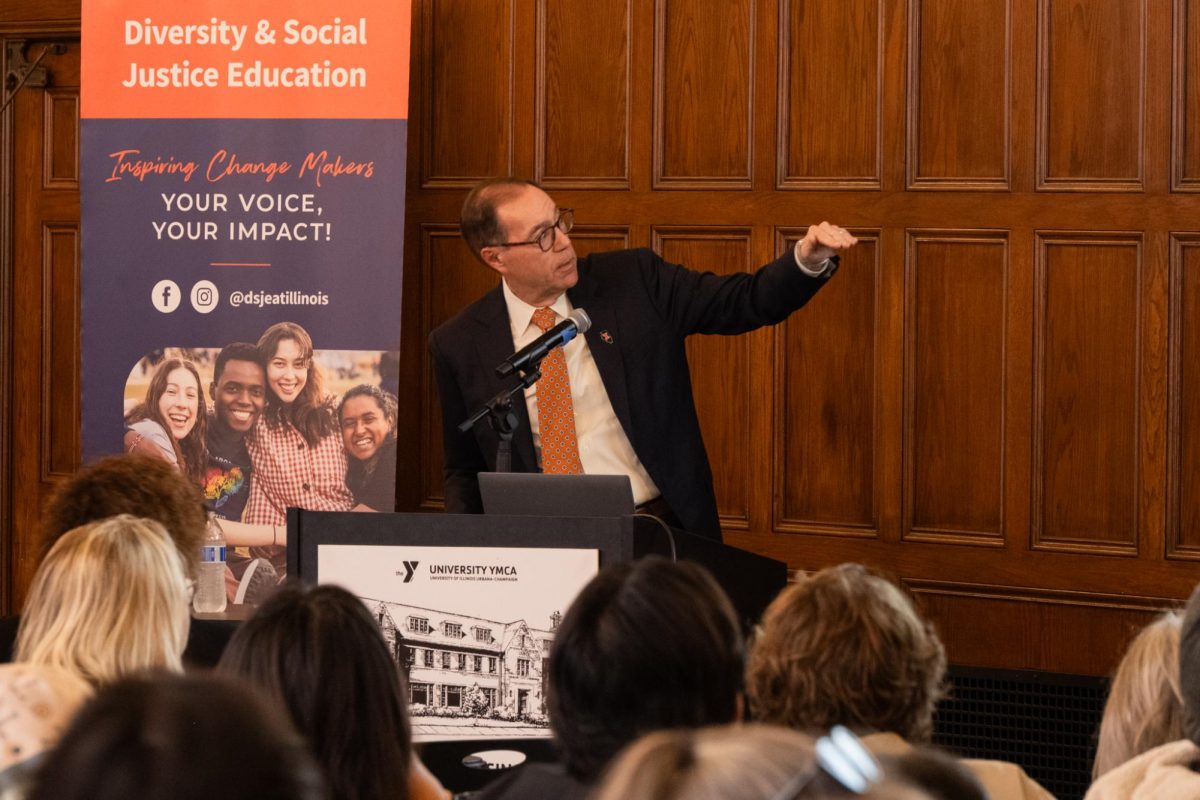Saturday marked the first time that members of the University and the Champaign-Urbana community united to celebrate Asian Pacific American Heritage Month in an event organized by several campus and community groups.
The celebration emphasized the diversity of the Asian Pacific American community, which is composed of over fifty distinct cultural groups around the United States, said Elana Schuster, graduate student in social work and intern at the Asian American Cultural Center.
Displays of traditional Korean drumming and Hmong music preceded a martial arts demonstration and a step dance performance by Lambda Phi Epsilon, the first and only Asian American interest fraternity. Other participants included Ghungroo Dance Company, whose performance mixed both North and South Indian dance traditions, and Chai-Town, an a cappella group whose repertoire included songs in Hindi, Tamil and English.
Participants included groups from the University, the Champaign-Urbana community and other locations. Members of the Shee Yee Community of Milwaukee, Wis. came to share the culture and experiences of the 15,000 Hmong immigrants in Milwaukee, a community born when some of them fled Laos after aiding the CIA during the Vietnam War.
May Kao Xiong, assistant director at the Asian American Cultural Center, said there is a tendency to view Asian Pacific Americans as a homogeneous cultural entity. Xiong said events such as the heritage celebration might help to deconstruct these misconceptions and have a tangible effect on the lives of Asian Pacific American students.
Get The Daily Illini in your inbox!
“I think it’s important for the University to understand its Asian-American population,” Xiong said, adding that the University needs to provide better services to immigrant and refugee students.
Xiong, who was raised in Danville but born in a refugee camp in Thailand, graduated from the University in 1999. She said she was on her own navigating financial aid and struggled in classes for lack of people who understood the linguistic and grammatical barriers she faced. She said while the University improved tremendously, students still face a lack of specified resources.
“It all leads back to the model minority myth, that we’re Asian American and we don’t need these resources,” Schuster said.
John Kim, senior in LAS, performed a spoken word poem expressing his own experience of these stereotypes.
“As an Asian American, sometimes these stereotypes and these words can be so belittling to the point that you believe them,” Kim said. “You try so hard to fit into American culture and try to be white or be black, and try not to be the Asian guy.”
Kim said his poem expresses years of witnessing and experiencing racism. He said racism is definitely a problem at the University, referring to experiences in which he was threatened or disrespected due to his race. Kim said the celebration was a chance to express that to a younger audience.
“I felt like I was given an opportunity to tell these young men and women that in a sense they’re very blessed to be Asian American, instill this sense of pride,” he said.
Schuster estimated about 400 people attended the event.
“As an adoptee, I was really excited. I saw at least five adopted kids come in with their parents,” she said, adding that it was a great way for adopted children to experience the cultures they came from.
Schuster said they hope to diversify both the audience and the performers for next year. However, she still felt the celebration made an impact, saying members of the Korean Cultural Center asked people to mark where they thought Korea was on a map. The result was stickers all over Asia.
“In that sense a lot of people really got educated,” Schuster said. “That’s just one of the ways I think people saw different sides.”






